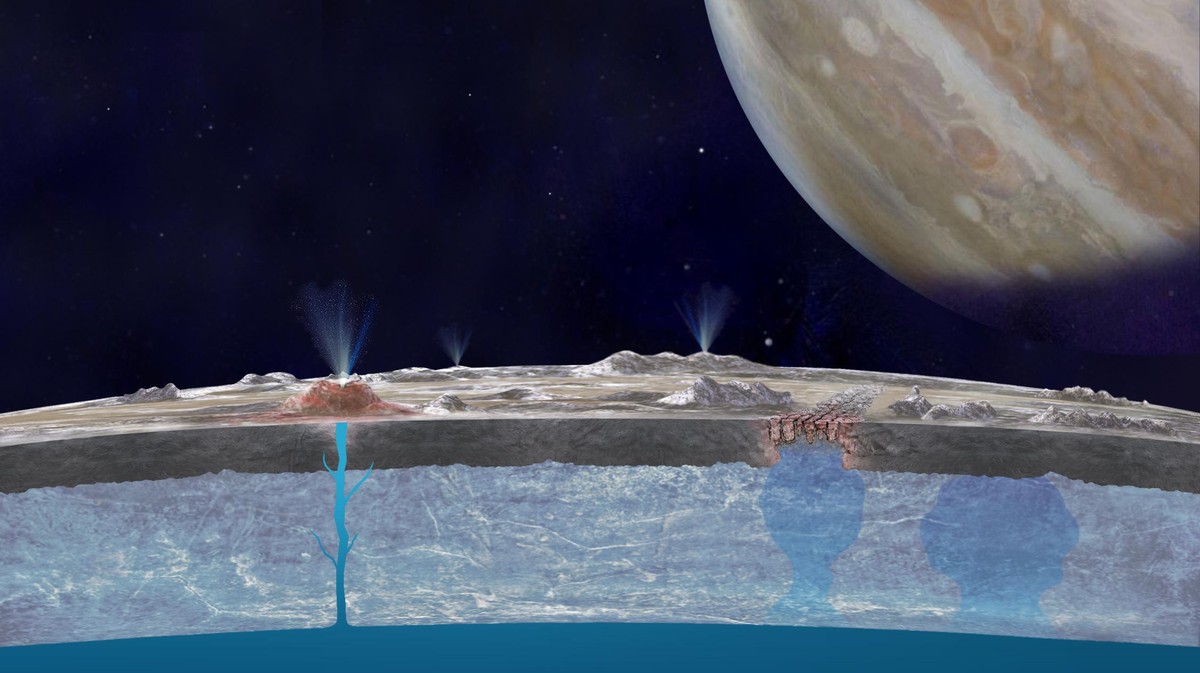Evidence of an Alien Ocean Found in Defunct 1990s Spacecraft Data

While the Cassini orbiter (RIP) actually flew through watery plumes erupting from cracks in Enceladus’ icy surface, similar sprays on Europa have long been suspected, but have never been directly sampled. Or have they? Research published Monday in
Nature Astronomy reveals that data acquired by NASA’s Galileo spacecraft (also RIP), which explored Jupiter from 1995 to 2003, includes evidence that the probe swept through a plume in 1997. Led by Xianzhe Jia, a planetary scientist at the University of Michigan in Ann Arbor, the study finds that the onboard magnetometer and plasma wave spectrometer picked up readings that suggest Galileo skinny-dipped through a Europan geyser. Jia was already familiar with Galileo’s observations, having worked with them extensively while pursuing his PhD at UC Los Angeles.
So when the Hubble Space Telescope began searching for plumes around Europa, turning up some promising imagery from the moon’s equator, he revisited data acquired by Galileo’s close flyby some 206 kilometers (128 miles) above Europa’s equatorial crust. Sure enough, the magnetometer picked up “perturbations expected if the spacecraft crossed a plume rising above the nearby surface,” according to the study. The plasma instrument corroborated the unusual measurements, which were probably produced by liquid water becoming ionized into hydrogen and oxygen atoms.
Jia and his colleagues modeled the impact a plume would have had on Galileo’s instruments and reached a similar scenario. “These results provide strong independent evidence of the presence of plumes at Europa,” the team concluded.
Source: vice.com